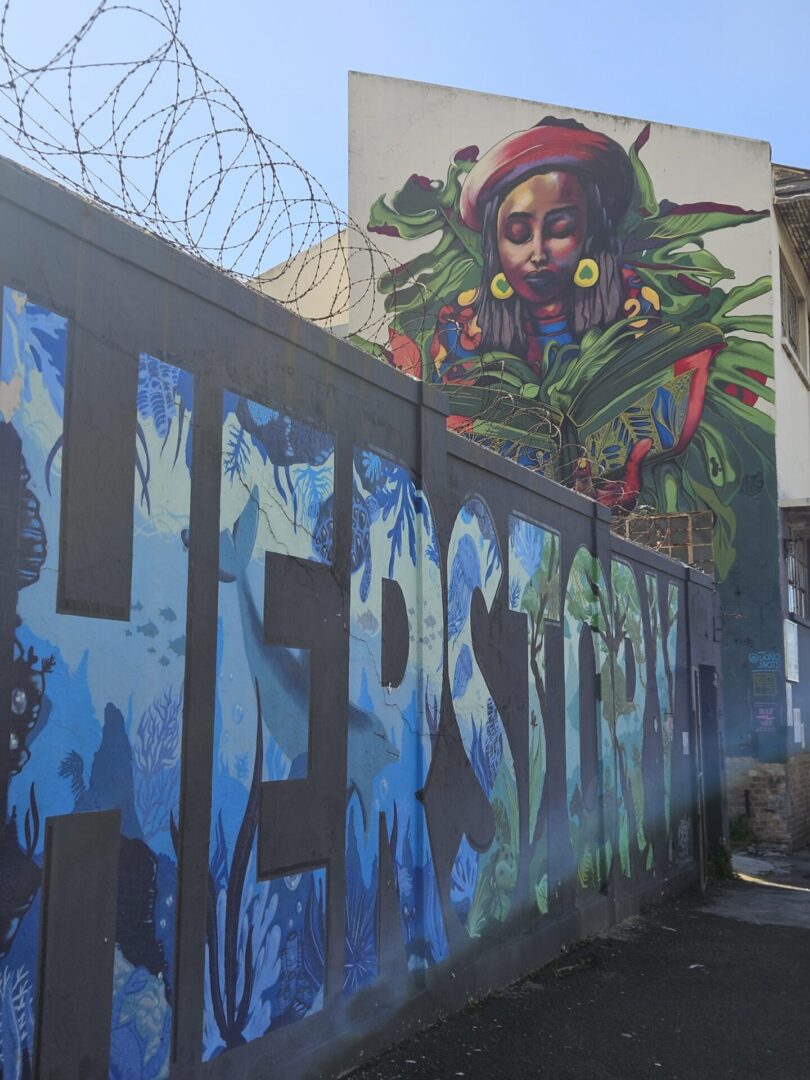”
Written byAziza Toeffie
Appreciating the Unconventional Masterpieces that reside in our backyards
The Evolution of Street Art
Street art, often regarded as the rebellious sibling of the traditional art world, has surged in popularity and relevance in recent years. No longer confined to the underground, it now graces the walls of cities across the globe. Urban landscapes become vibrant, living galleries. But the real question is, do we truly appreciate the depth and significance of these colourful bursts of expression that surround us daily? And an even more burning question is; if not, why not?
The emergence of street art was born from the desire to make art more accessible to everyone, much rather than those who could afford a fancy museum. This was an act of rebellion (we love those) and to highlight that art doesn’t need to be in a gallery for it to be labeled as art. Early pioneers like Keith Haring and Jean-Michel Basquiat used the streets as their canvas to convey powerful social and political messages.
Today, following this rebellion, it includes everything from massive and intricately detailed murals to smaller, thought-provoking stencils. Each piece reflects the artist’s unique perspective and message, contributing to the rich tapestry of our urban environment.
Street art in your backyard: a Cape Town guide
The streets of Cape Town are quite literally run by art. If you haven’t already seen some of the murals gracing the walls and streets of the Mother City, then are you even Capetownian? Woodstock and Observatory, two eclectic neighbourhoods in Cape Town, serve as the epicenter of the city’s street art scene. The streets of Woodstock, in particular, are adorned with colourful murals, graffiti, and stencil art that reflect the neighbourhood’s vibrant and loud spirit.
Cape Town’s street art is also deeply rooted in the city’s history. It often reflects the struggles and triumphs of South Africa’s past, paying homage to iconic figures like Nelson Mandela and celebrating the country’s progress towards equality and reconciliation.
So, if you’re looking for a bit of colour in your life, take a stroll down to Woodstock, Obs and Salt River. Some of the artworks even have barcodes where you can scan and follow the artists, as well as follow full tours. Appreciation at its finest!
“The more I paint, the more I like everything.” – Jean Michel Basquiat
The Role of Street Art in Urban Culture
To me, street art is not just about aesthetics; it serves as a means of true expression for marginalised voices and communities. Artists often use their work to highlight social injustices, challenge the status quo, and spark meaningful conversations.
Street art has a transformative effect on Cape Town’s urban spaces. Neglected buildings, alleyways, and public spaces are rejuvenated and made more inviting through vibrant and imaginative artwork. These transformations contribute to a sense of community pride and ownership.
Break Down the Barriers
One of the key ways to appreciate street art more is to break down the barriers that separate it from traditional art forms by:
Understanding the Message: Take the time to understand the message behind the art. Many pieces convey powerful narratives or commentary on societal issues. Engaging with the artist’s intent can deepen your appreciation.
Exploring the Neighborhood: Street art is often location-specific, with artists choosing sites that hold significance to their message. Explore the neighborhood where the art is located, and you may uncover hidden gems that tell a larger story about the area.
Attending Street Art Tours and Festivals: Cape Town offers guided street art tours for your convenience. These experiences provide valuable insights into the art form, its history, and the artists behind the pieces.
Supporting Local Artists: Most street artists are local talents, and supporting them by purchasing their artwork or attending their exhibitions can foster a greater connection to their work.
Here, art is not just a form of decoration; it’s our city’s cultural, social, and economic life. It reflects the diverse voices of our people and adds depth to the city’s identity.
In Cape Town, even in SA as a whole, street art is a testament to the city’s ongoing journey of self-expression. Not to mention the healing, and social progress. It’s a dynamic and evolving art form that continues to captivate both locals and visitors, inviting them to explore the city’s streets with a fresh perspective and a deeper appreciation for the stories and voices woven into its walls.
“Street art is nothing else but urban poetry that catches someone’s eye. Being a street artist is impossible because the city itself is the artist.” – Christian Guémy
So, the next time you pass by a striking mural or a thought-provoking stencil, take a moment to pause, reflect, and let the beauty of street art captivate your senses!





